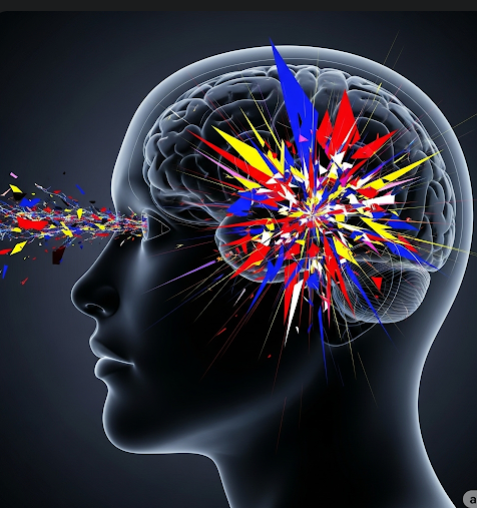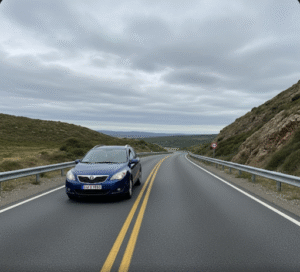Overview
Photosensitive epilepsy is a form of epilepsy in which seizures are triggered by visual stimuli, particularly flashing or flickering lights and certain patterns. This condition typically begins in childhood or adolescence and is more common in individuals with generalized epilepsy. Though relatively rare, it can have a significant impact on daily life, especially in a digital environment filled with screens and bright light sources.
What is Photosensitive Epilepsy?
Photosensitive epilepsy is a neurological condition where seizures are provoked by visual input — such as flashing lights, rapid changes in brightness, or specific visual patterns. It is a type of reflex epilepsy, meaning that seizures occur in response to a specific external trigger. The most common type of seizure associated with photosensitive epilepsy is a generalized tonic-clonic seizure, although other types (like myoclonic or absence seizures) can also occur.
This condition is typically diagnosed through an electroencephalogram (EEG) test with photic stimulation, which identifies abnormal brain activity in response to flashing lights.
Symptoms
Symptoms occur when the individual is exposed to triggering stimuli and may include:
- Sudden loss of consciousness
- Convulsions or full-body shaking (tonic-clonic seizure)
- Eye blinking or staring spells
- Twitching of the arms or legs
- Temporary confusion or disorientation after a seizure
- Aura (a warning sign such as dizziness or visual disturbance)
- In some cases, non-convulsive seizures such as brief lapses in attention or awareness
Not all individuals with photosensitive epilepsy will experience the same symptoms or severity.
Causes
Photosensitive epilepsy is caused by abnormal electrical activity in the brain triggered by visual stimuli. The exact cause is not fully understood, but contributing factors include:
- Genetics: A family history of epilepsy or photosensitivity increases risk
- Abnormal brain activity in response to flickering lights or patterns
- Underlying epilepsy syndrome (e.g., juvenile myoclonic epilepsy or idiopathic generalized epilepsy)
- Neurodevelopmental conditions that affect brain excitability
The triggers vary but commonly include:
- Flashing lights (television, video games, strobe lights)
- Rapid changes in screen brightness
- Repetitive geometric patterns or striped designs
- Certain animations or fast-paced video content
Risk Factors
Factors that increase the likelihood of developing or triggering photosensitive epilepsy include:
- Age (most common in children and teens aged 7–19)
- Female gender (slightly higher risk than males)
- Family history of epilepsy or light sensitivity
- Pre-existing generalized epilepsy
- Excessive screen time without breaks
- Sleep deprivation and stress (can lower the seizure threshold)
- Viewing videos or playing games in dark environments
Complications
If unmanaged, photosensitive epilepsy can lead to:
- Recurrent seizures, resulting in injuries or falls
- Difficulty in academic or professional settings
- Anxiety and fear around using screens or going to public spaces
- Social withdrawal or depression
- Limitations in career choices or driving (based on seizure control)
- Sudden unexpected death in epilepsy (SUDEP) — although rare, it is a serious risk in severe, uncontrolled epilepsy
Prevention
While not always preventable, the risk of seizures can be greatly reduced by taking the following precautions:
- Avoid known triggers such as strobe lights, flickering screens, or high-contrast patterns
- Use screen filters or blue light reduction modes on devices
- Watch television or use computers in well-lit rooms
- Sit further away from screens and take regular breaks
- Wear polarized or specially tinted glasses (e.g., FL-41 lenses)
- Reduce screen brightness and avoid fast-paced visual content
- Follow prescribed medication routines to keep seizures under control
- Get adequate sleep and manage stress effectively
Treatment Options in Korea
South Korea offers excellent neurological care, with access to the latest diagnostic tools and personalized treatment plans for epilepsy, including photosensitive types. Treatment options include:
- Antiepileptic medications (AEDs): Commonly prescribed drugs include valproic acid, levetiracetam, and lamotrigine, which help stabilize brain activity
- EEG with photic stimulation: Used to confirm diagnosis and identify sensitivity thresholds
- Lifestyle counseling: Korean neurologists often provide structured guidance on avoiding triggers, including safe use of electronic devices
- Neuro-ophthalmology services: Available for patients needing vision-related epilepsy management
- Cognitive Behavioral Therapy (CBT): Offered in some neurology clinics for stress-related seizure management
- Specialized epilepsy clinics: Many top-tier hospitals such as Seoul National University Hospital, Samsung Medical Center, and Severance Hospital offer multidisciplinary epilepsy programs with English-speaking staff
- Genetic testing: Available for complex or inherited cases, helping personalize the treatment plan
Korea’s medical infrastructure and focus on technology-integrated healthcare make it a leading destination for patients with photosensitive epilepsy, offering high-quality care with a strong emphasis on prevention, education, and long-term wellness.













